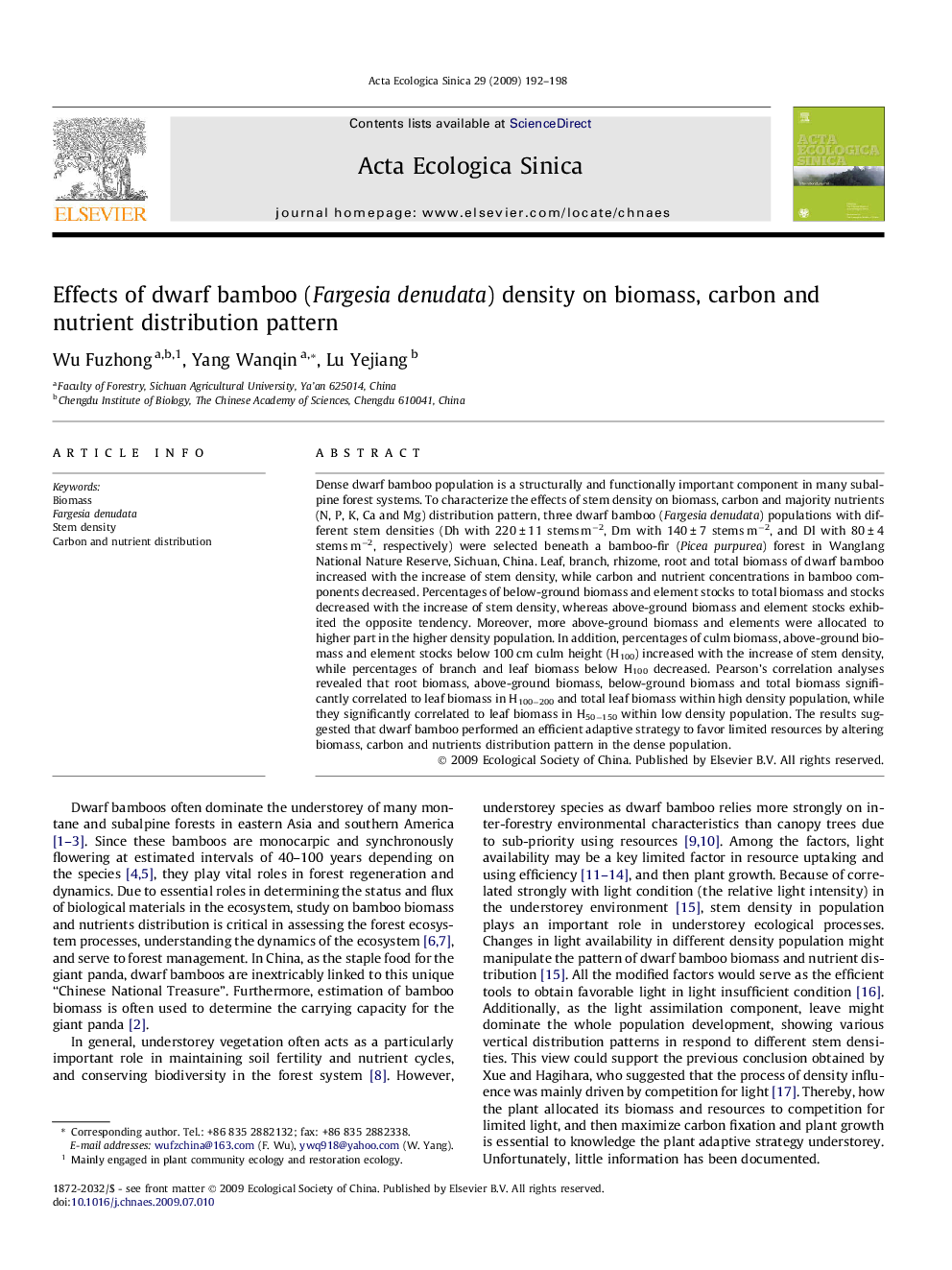| کد مقاله | کد نشریه | سال انتشار | مقاله انگلیسی | نسخه تمام متن |
|---|---|---|---|---|
| 4380215 | 1303975 | 2009 | 7 صفحه PDF | دانلود رایگان |

Dense dwarf bamboo population is a structurally and functionally important component in many subalpine forest systems. To characterize the effects of stem density on biomass, carbon and majority nutrients (N, P, K, Ca and Mg) distribution pattern, three dwarf bamboo (Fargesia denudata) populations with different stem densities (Dh with 220 ± 11 stems m−2, Dm with 140 ± 7 stems m−2, and Dl with 80 ± 4 stems m−2, respectively) were selected beneath a bamboo-fir (Picea purpurea) forest in Wanglang National Nature Reserve, Sichuan, China. Leaf, branch, rhizome, root and total biomass of dwarf bamboo increased with the increase of stem density, while carbon and nutrient concentrations in bamboo components decreased. Percentages of below-ground biomass and element stocks to total biomass and stocks decreased with the increase of stem density, whereas above-ground biomass and element stocks exhibited the opposite tendency. Moreover, more above-ground biomass and elements were allocated to higher part in the higher density population. In addition, percentages of culm biomass, above-ground biomass and element stocks below 100 cm culm height (H100) increased with the increase of stem density, while percentages of branch and leaf biomass below H100 decreased. Pearson’s correlation analyses revealed that root biomass, above-ground biomass, below-ground biomass and total biomass significantly correlated to leaf biomass in H100−200 and total leaf biomass within high density population, while they significantly correlated to leaf biomass in H50−150 within low density population. The results suggested that dwarf bamboo performed an efficient adaptive strategy to favor limited resources by altering biomass, carbon and nutrients distribution pattern in the dense population.
Journal: Acta Ecologica Sinica - Volume 29, Issue 3, August 2009, Pages 192–198